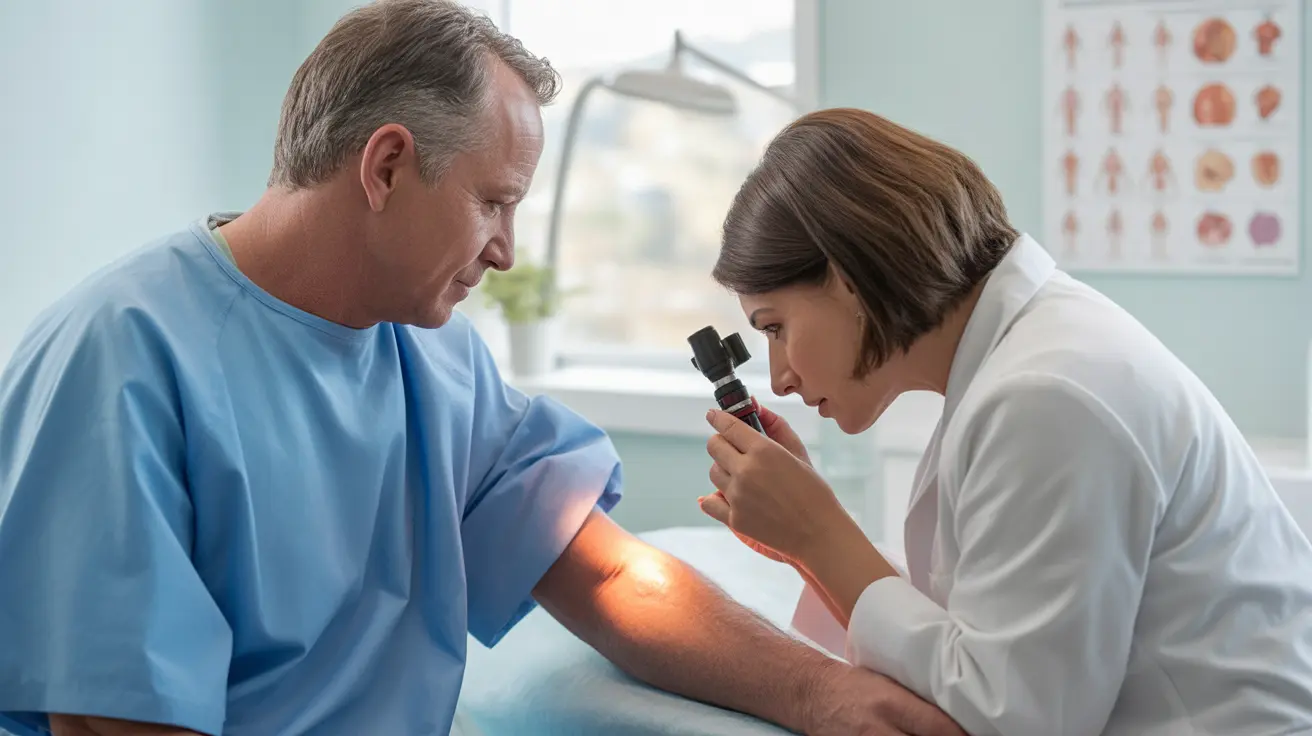Regular skin cancer screenings are crucial for men's health, yet many aren't sure what to expect during a full body skin exam. Understanding the process can help reduce anxiety and ensure you're taking the right steps to protect your health. This comprehensive guide walks you through everything you need to know about male full body skin exams.
What Is a Full Body Skin Exam?
A full body skin exam is a thorough inspection of your skin performed by a qualified healthcare provider, typically a dermatologist. During this examination, the doctor carefully checks your entire body for suspicious moles, growths, or other skin changes that could indicate skin cancer or other skin conditions.
The Examination Process
The male full body skin exam is a straightforward but thorough procedure. You'll be asked to change into a medical gown, and the doctor will systematically examine your skin from head to toe. The process typically takes 15-20 minutes, depending on how many areas require closer inspection.
What to Expect During the Exam
Your dermatologist will use bright lighting and possibly a dermatoscope (a special magnifying tool) to examine your skin. They'll document any concerning spots and may take photographs for future comparison. The exam is non-invasive, though the doctor may gently touch or probe certain areas to better evaluate skin characteristics.
Areas Examined During the Screening
The examination covers your entire body, including:
- Face, scalp, and neck
- Chest and torso
- Arms and hands, including between fingers
- Back and shoulders
- Legs and feet, including between toes
- Groin and buttocks areas
- Areas not typically exposed to sun
Risk Factors and Screening Frequency
Several factors influence how often men should undergo skin cancer screenings:
High-Risk Factors:
- Fair skin, light hair, or light eyes
- History of significant sun exposure
- Family history of skin cancer
- Previous skin cancer diagnosis
- Multiple atypical moles
- Weakened immune system
Preparing for Your Exam
To ensure the most effective screening possible:
- Remove all nail polish
- Don't wear makeup
- Tie back long hair
- Remove any bandages unless medically necessary
- Note any concerning spots beforehand
- Be prepared to point out any changes you've noticed
Frequently Asked Questions
What exactly happens during a male full body skin exam and how long does it take? During the exam, you'll change into a gown while the doctor systematically examines every inch of your skin for suspicious spots or changes. The entire process typically takes 15-20 minutes.
How often should men get a full body skin exam for skin cancer screening? Most men should get a full body skin exam annually. However, those with high-risk factors may need more frequent screenings, typically every 3-6 months.
What areas of the body are checked during a male full body skin exam? The examination covers your entire body, including scalp, face, neck, torso, arms, hands, legs, feet, and sensitive areas like the groin and buttocks. No area is excluded as skin cancer can develop anywhere.
Who is at higher risk for skin cancer and needs more frequent full body skin exams? Men with fair skin, history of extensive sun exposure, family history of skin cancer, multiple atypical moles, or compromised immune systems are at higher risk and may need more frequent screenings.
How can men prepare for their full body skin exam to ensure a thorough check? Remove nail polish and makeup, tie back long hair, avoid applying lotions, and note any concerning spots beforehand. Wear comfortable clothing that's easy to remove, and be prepared to discuss any skin changes you've noticed.




